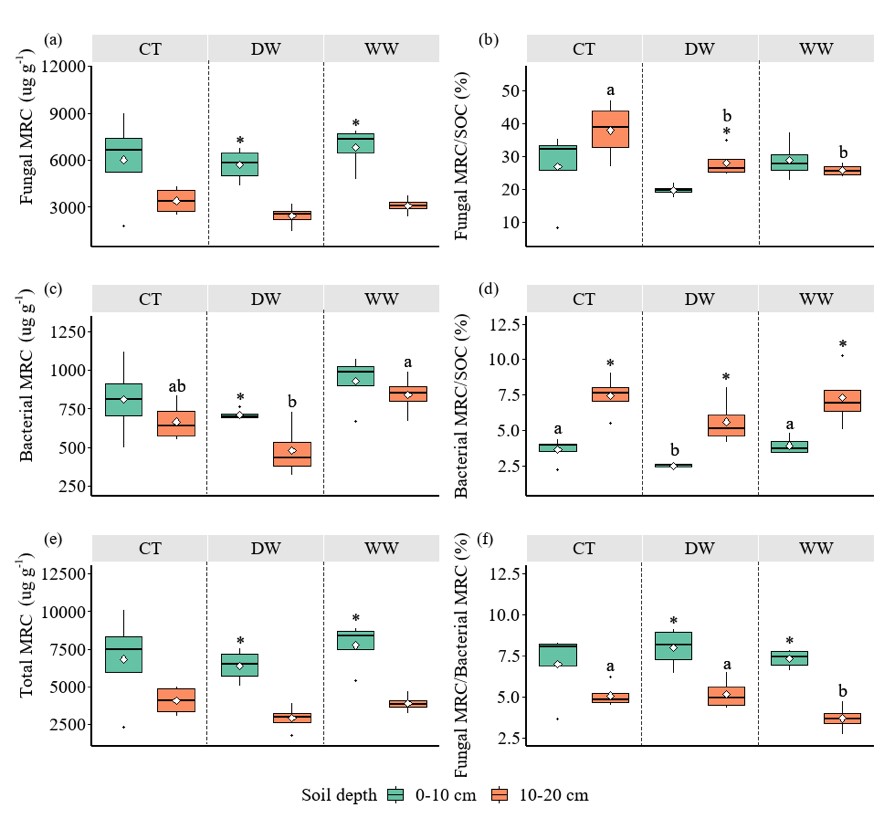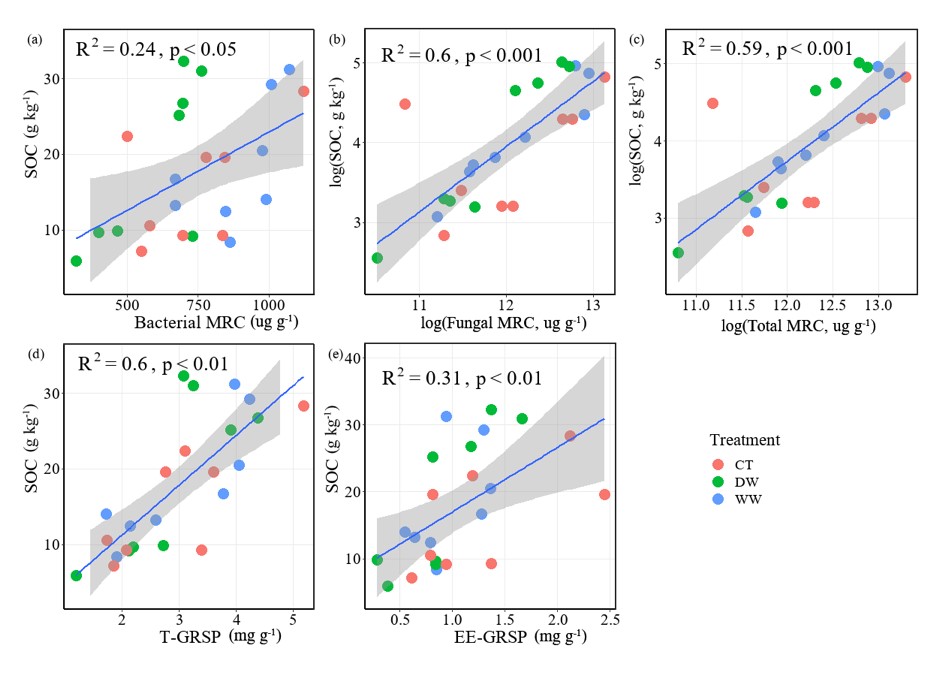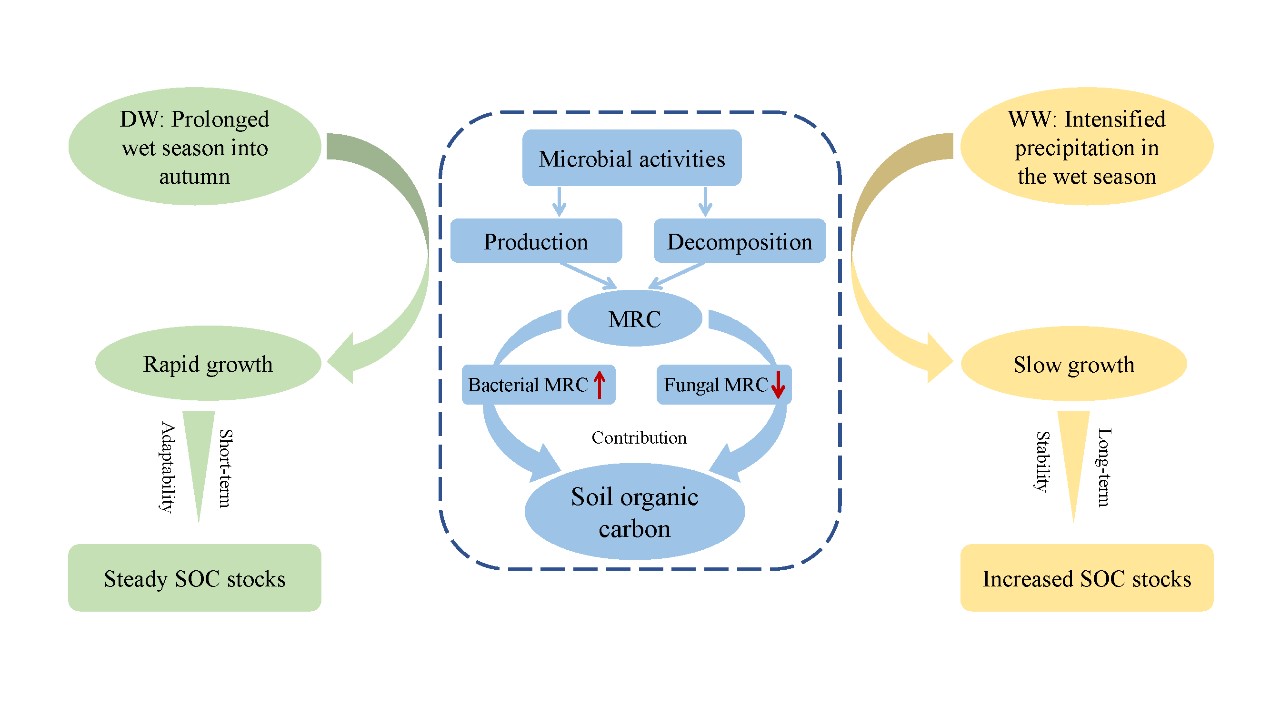

Under the guidance of the professor Faming Wang, a master student at the Center for Ecology and Environmental Science of South China Botanical Garden, Chinese Academy of Sciences, studied the changes of precipitation patterns on soil organic carbon (SOC) accumulation. The study has been recently published in the journal Plant and Soil. Jinge Zhou is the first author, and Faming Wang is the corresponding author.
Tropical forest soils have a high carbon (C) storage and sequestration potential, and their structural and functional complexity indicates that even small changes in SOC might affect global C cycling. Precipitation patterns in the tropics of southern China are predicted to change with an increase of the rainfall in the wet season (WW) and a delay of the wet season into autumn (DW). However, it is not clear how will the soil C processes of tropical forests respond to the changing precipitation patterns.
They established a precipitation manipulation experiment through water exclusion or addition to simulate the predicted WW and DW, which was based on the platform of Xiaoliang Research Station of Tropical Coastal Ecosystems, Chinese Academy of Sciences. Our results indicated that changes in precipitation patterns did not affect soil properties at 0-10 cm soil depth. However, the WW treatment significantly increased microbial biomass (by 52%) at 10-20 cm soil depth owing to its long-term promotion. At the same time, the increment of microorganisms significantly decreased the contribution of fungal MRC to SOC (by 32%), and there was an increasing trend in bacterial MRC and SOC. Combined with the linear regression and partial least squares path modeling, the promotion on SOC in the WW treatment was mainly caused by the increment of bacterial MRC.
The study hypothesized that over a long time, the facilitation of microbes and the alteration of microbial contribution to SOC by intensified precipitation in the wet season will enhance the carbon sequestration capacity of tropical forest soils, which is of great importance in mitigating global warming. More detailed information can be seen from the website: https://doi.org/10.1007/s11104-022-05389-2




